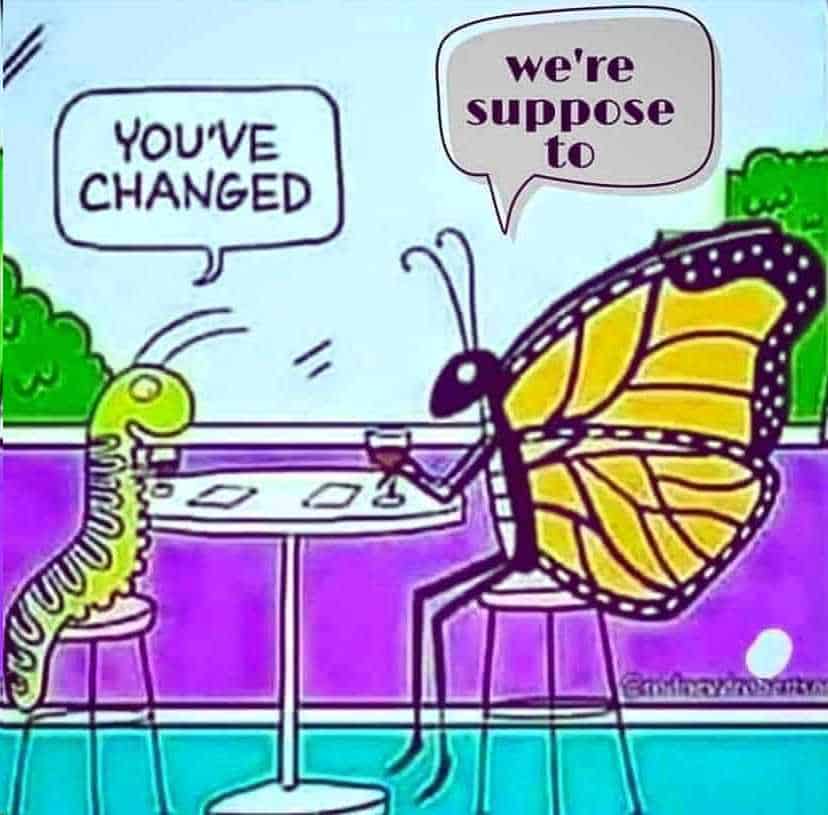CHANGE IS GOOD But The Wrong Method Will Make Your Miserable
As a coach, course creator, or CEO, you are often asking your clients or employees to go through change and change is often rewarding, but difficult.

Lean into the Pain
As a mediator helping teams process through conflict, I had a saying, “Lean into the Pain.” I got the analogy from watching a pro football player being interviewed. The interviewer said, “I know your right ankle has been hurt, so I guess you make sure you don’t put too much pressure on it when you are playing, right?
The pro football player immediately responded back by saying, “Oh no. You can’t do that. It throws off all your moves.” And then he said this: “You have to lean into the pain.”
I loved the metaphor. I adopted it for learning to confront conflict and also for facing any change or challenge that faced me.
It is the most natural human reaction to pull away from pain, but greats don’t do that. Greats Lean into the Pain. As I pondered on this truth, I wrote this:
Change is Good: Embrace the Struggle
I hate struggle–absolutely, positively hate it. In struggle, I feel helpless, frustrated, exasperated, confused, stuck, fearful, and angry. And when I am enmeshed in struggle, I don’t like to suffer silently. In fact, I find that somehow making lots of loud, long, woeful, pitiful sounds make me feel better. These howls serve another purpose; they are bids for pity from any interested parties. Sometimes this howling works to engender pity and sometimes it doesn’t.
What it never works for, however, is solving the dilemma.
“Do” Your Way Out of Hard Places
At some point, I, like all of us, am forced to come to terms with the most crucial fact of change: no one can “Get Me Out of This!” but me. There are just some processes that you can’t delegate your way out of, buy your way out of, talk your way out of, think your way out of, “drama” your way out of, moan your way out of, or howl your way out of. You have to “do” your way out of it!
What is Enabling?
Enabling means encouraging dysfunctional behavior. Supporting, by contrast, means encouraging functional, healthy behavior.
 Change is Good: Butterfly Birthing
Change is Good: Butterfly Birthing
In the transformation of worm to butterfly, the “Get Me Out of This” cocoon process is how the little wormy guy inside develops enough Wing Strength (i.e., capacity) to fly at Butterfly Time. The struggle actually pumps fluids through the wings to expand them. If, however, someone (well-meaning, of course) takes a little razor blade and gently slices just a little opening in that cocoon so the Almost Butterfly has an easier time of ‘Getting Out of This!” that person is actually damaging the butterfly’s odds for success.
Change is Good: Well Meaning is Not Well Done
This well-meaning attempt interferes with the ever-so-necessary struggle (i.e., strengthening process) and by the time the Almost Butterfly emerges, it will not have the capacity to fly because its wings are not strong enough—it will simply flop around, unable to ever fly. Left to itself, the emerging-from-the-cocoon struggle develops a key ability needed for the little guy’s new level of existence. Maybe that’s why nature designed it to just “let the process” do its work. Your interference is just that—interference.
Change is Good. Learned Dependence is Not.
Sunglasses operate on the same principle. Did you know that if you wear sunglasses, it lessens your eyes’ own abilities to filter strong light? Gradually, your eyes will start to “depend” on the sunglasses, and lo and behold, your eyes will get more and more sensitive to light, thereby creating more and more dependence on sunglasses. Learned dependence and learned helplessness. (I realize what a horrible choice it is to have to choose between light-sensitive eyes or to look so amazing with those sunglasses on! Life is full of hard choices!)
Examples of Enabling:
- When I taught school, I often saw parents who “intervened” a lot between their kids and their consequences. This was chosen rather than the opposite tack, “if you catch it at school, you catch it at home too!” Many years later, I would watch these same kids get into more and more trouble with increasing consequences that ultimately were so severe, the parents could no longer “Get Them Out of This.”
- In the workplace, there often exists “passive interference.” Managers often continue to let some employees “get by with” behavior choices that are not acceptable, but “are too much trouble” to deal with. Ultimately, resentment builds toward that person and toward the leader for not dealing with it—the other workers start to feel there are “favorites” and/or “head-turning” and morale suffers and cohesiveness splinters.
- In psychology, when another person “intervenes” a lot in another person’s life and “struggle”, they get the label “enabler”—which simply means they stand in the way of another’s consequences, thereby keeping that person a Cocoon Dweller.
Next, we hear that “helped” person “howling” that they don’t have the “Wing Strength” to make the necessary change. And in many ways, they are right–thanks in part to you and me “helping” them stay helpless and dependent.
This “learned helplessness” process does not in any way imply that being supportive, offering genuine concern, and a strong shoulder is not exactly the right thing to do. Most welcome such gestures during times of trouble and struggle.

What is Enabling vs. Supporting?
What’s acceptable help and what isn’t? The difference is often hard to discern. The essence of “professional facilitation” is to know this difference. When I am in the “professional facilitator” role, I keep the following analogy in mind and offer it to you as perhaps a clarifying thought. This analogy helps me to help, but not to interfere—again, very admittedly, a fine line.
Option 1: Supporting
A runner is running a marathon, but I am not the runner. Since I am not the runner, my job is not to run. Period. My job is to stay on the sidelines (and not get any runners disqualified because I’m on the track) and cheer them as they go by, to have a handy glass of water to hold out as they wobble past, to assure them that they are “on course” and to encourage them that the finish is not too much farther—in essence, to “let the process” do its work. And how welcoming to all of us is that kind of help when we are sweaty, dirty, and tired from the struggle.
Option 2: Enabling
That is a much different process from seeing the runner wobbling and struggling and in misdirected compassion, leaping and yelling on the track, “Here I am! Let me finish the race for you! Quick, have a seat. Give me your number and your running shoes. I’ll take it from here!” And of course, at that point, I’m not helping–I’m Cocoon Slicing.
In essence, it comes down to this: You can learn dependence. You can learn helplessness. Or you can learn strength. You can “teach” other people dependence. You can teach other people helplessness. Or you can “teach” them strength.
Samantha told me, “I have been an expert enabler. By “expert” I mean that I was really, really good at it. Once I quit – what a relief – but oh, how hard it was.”
I hate struggle–absolutely, positively hate it. I want every day, every endeavor, and every dream to be smooth sailing, perfect timing, and to yield maximum results. It befuddles me why life doesn’t seem to cooperate with these simple requests.
Maybe it has to do with Wing Strength.

